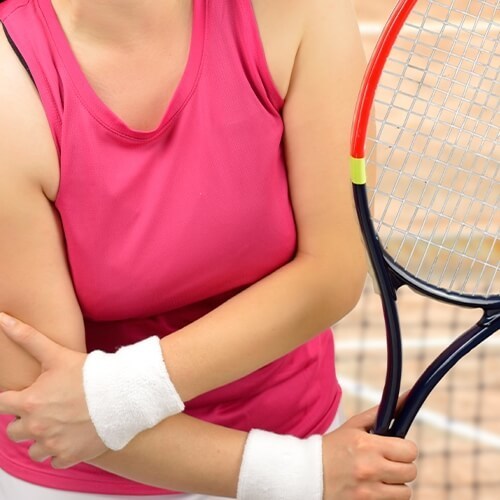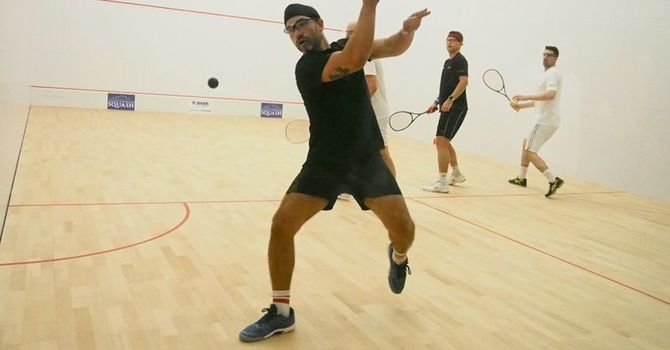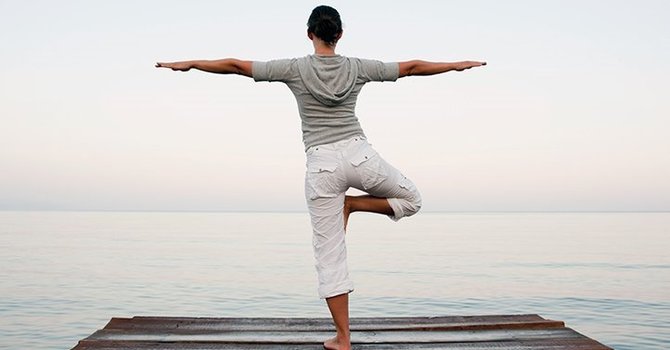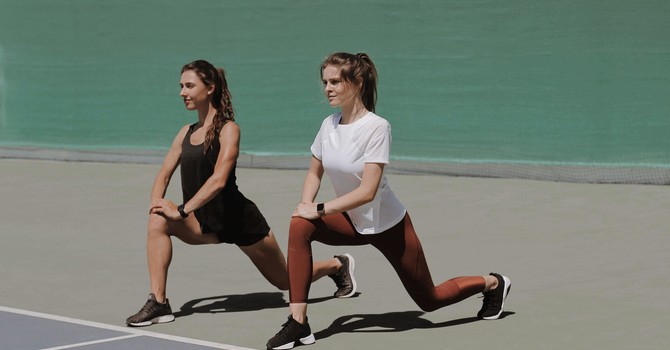
Here are a few things to consider for prevention of injuries in regards to racquet sports:
1. Limit the amount you play to avoid tennis elbow!
Tennis elbow can be quite debilitating and takes on average 6 months to 2 years to recover, with most people recovering in about 12 months. Unfortunately, for 10-20% of people the symptoms will persist more than a year and there are frequent recurrences in those who had previously recovered.
One of the biggest risk factors for developing tennis elbow is the amount of playing time per day or week.
One study found that players who were under 40 years old and playing 2 or more hours per day had nearly twice the risk of developing tennis elbow than those who played under 2 hours. In the same study, players who were over 40 and played 2 or more hours per day were at 3.5 times the risk of developing tennis elbow than those who played under 2 hours. In another study, those players that developed tennis elbow averaged 8 hours a week of play, whereas those that didn't develop tennis elbow averaged 5.5 hours a week of play.
If you haven’t had tennis elbow yet, be happy but be wise! Over the course of a tennis player’s lifetime, the incidence of tennis elbow is 35-51%! Limiting your number of hours to < 2 per session and around 5.5 hours per week is a smart move in preventing development of tennis elbow (or recurrence if you already recovered).
2. Don't back peddle when someone lobs you. Instead learn to use a drop-step approach.
Falls are a significant concern in pickleball, contributing to a large portion of injuries. Studies suggest that around 40% of pickleball-related injuries stem from falls or over reaching for shots. This makes falls the most common cause of injury in pickleball compared to overuse or active game injuries.
Pickleball's popularity is rising, and so are these fall-related injuries, especially among older players. Avoiding back peddling (when you face forward but try to run backward) is the most important thing you can do to prevent falls. Instead, learn to use a drop-step approach (take your first step back and turn your hips and shoulders in that direction similar to an outfielder in baseball or softball). This is a much safer way to get back to the ball quickly and should allow for a better setup for your next shot as well.
The other thing that is important for all individuals to focus on as they age (I'm talking 40-50 years old and older) is to make working on your balance part of your daily life. Try standing on one leg. Is that easy or hard? If it's hard, then there's your exercise you can do while you wait for the microwave or while you brush your teeth. If that is too easy, try standing on one leg with your eyes closed. Most people will find this fairly challenging. If both are too hard, then stand on both feet until you can work up to standing on one foot.
Here are some normal single leg balance times (Eyes open = EO and Eyes closed = EC) based on age. Note that this is all people of a particular age group, not necessarily just athletes. If you are participating in athletics, you should be at least as good as others your age, if not better! Test yourself and see how you do compared to other people your age! (Note that the test stops at 30 seconds)
20-29 year olds: EO 30 second, EC 28.8 seconds
30-39 year olds: EO 30 seconds, EC 27.8 seconds
40-49 year olds: EO 29.7 seconds, EC 24.2 seconds
50-59 year olds: EO 29.4 seconds, EC 21 seconds
60-69 year olds: EO 22.5 seconds, EC 10.2 seconds
70-79 year olds: EO 14.2 seconds, EC 4.3 seconds
3. Prevent shoulder AND elbow pain by maintaining your shoulder mobility.
There are many studies which have looked at the corrrelation between shoulder mobility and shoulder and elbow pain and injury in overhead athletes (think baseball, tennis, volleyball). We know from various studies that a healthy dominant shoulder total range of motion should be very close to the non-dominant shoulder's total range of motion. When someone comes into physical therapy with shoulder or elbow pain, this is one of the first things I look at. Although it is not as exact, you can screen this by yourself by seeing if you can touch your hands behind your back with your dominant arm reaching overhead and your non-dominant arm reaching behind your back to see if they touch. Then compare with your non-dominant arm on top and your dominant arm reaching behind your back. If you can't reach as far with your dominant arm behind your back, then you are likely at risk of developing shoulder and elbow pain.
Schedule an evaluation and we will assess your shoulder range of motion among other tests and devise an exercise routine along with other treatment options to improve your motion and reduce your likelihood of injury.
For athletes, staying healthy is key to reaching their full potential. While physical therapy is fantastic for recovery, the best approach to injuries is to avoid them altogether. Here's how prevention reigns supreme:
- Proactive Approach: Physical therapists can assess weaknesses and imbalances, creating personalized exercises to address them before they lead to injuries.
- Strength & Flexibility: A strong, flexible body is a resilient body. Targeted training programs and stretching routines can significantly reduce injury risk.
- Proper Technique: Mastering proper form in your sport minimizes stress on muscles and joints, preventing overuse injuries. Physical therapists can analyze and refine your technique for peak performance and safety.
By prioritizing prevention, athletes can train harder, recover faster, and dominate their competition – all while staying injury-free.
You can schedule an evaluation at Superior Physical Therapy to have an assessment for injury prevention, or if you already have an injury or pain we can help you on your way to recovery!

Keely Behning
Contact Me




